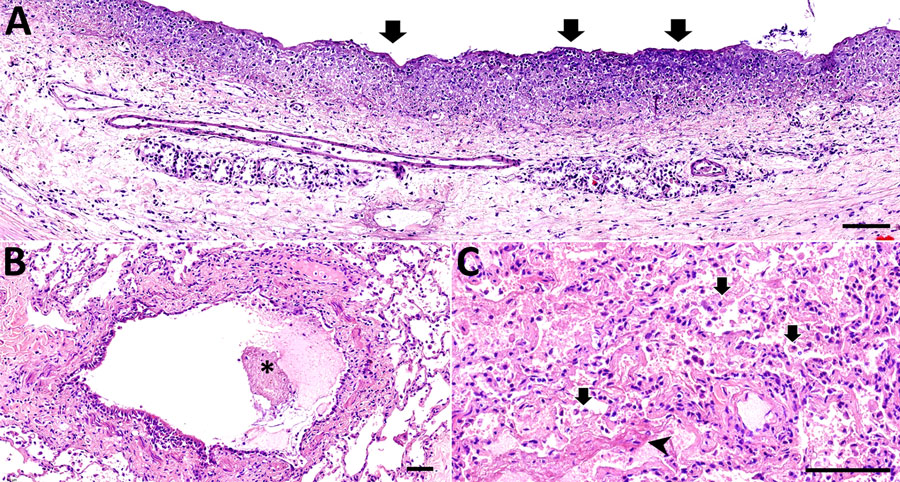Volume 30, Number 12—December 2024
Research
Novel Mastadenovirus Infection as Cause of Pneumonia in Imported Black-and-White Colobuses (Colobus guereza), Thailand
Figure 7

Figure 7. Hematoxylin and eosin–stained tissue samples from colobus 1 in an investigation of novel mastadenovirus infection causing pneumonia in imported black-and-white colobuses (Colobus guereza), Thailand. A) Trachea showing mucosa is extensively replaced by laminated bands of fibrillar material (arrows) intermixed with aggregates of karyorrhectic debris and degenerated neutrophils. B) Lung section showing lumen of the bronchial airways; flocculent mats of fibrin (asterisk) and neutrophils can be seen. C) Lung section showing alveoli filled with foamy macrophages (arrows), polymorphonuclear cells and eosinophilic material (arrowhead); alveolar capillaries are markedly engorged. Scale bars indicate 100 µm.
Page created: October 16, 2024
Page updated: November 26, 2024
Page reviewed: November 26, 2024
The conclusions, findings, and opinions expressed by authors contributing to this journal do not necessarily reflect the official position of the U.S. Department of Health and Human Services, the Public Health Service, the Centers for Disease Control and Prevention, or the authors' affiliated institutions. Use of trade names is for identification only and does not imply endorsement by any of the groups named above.